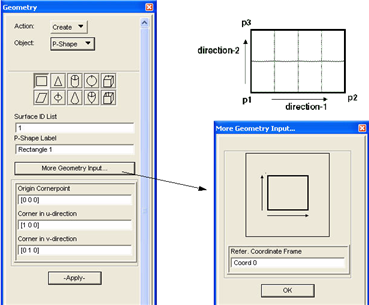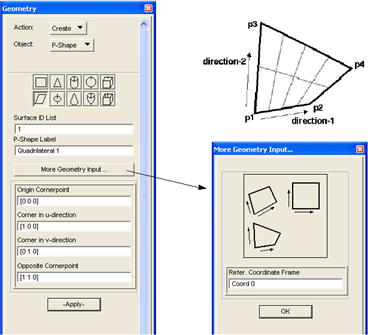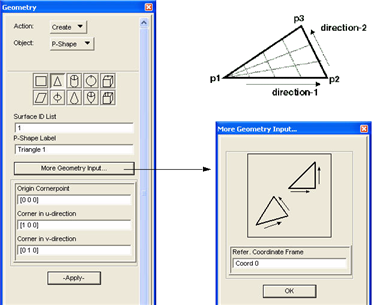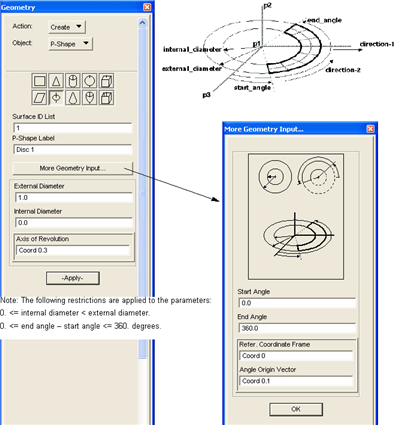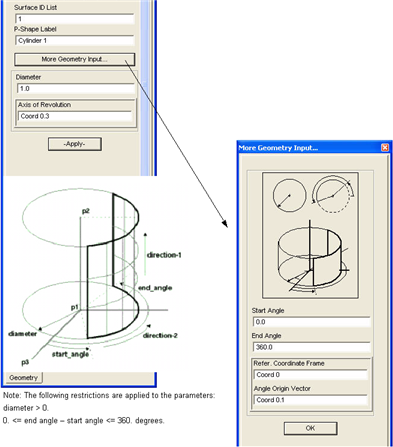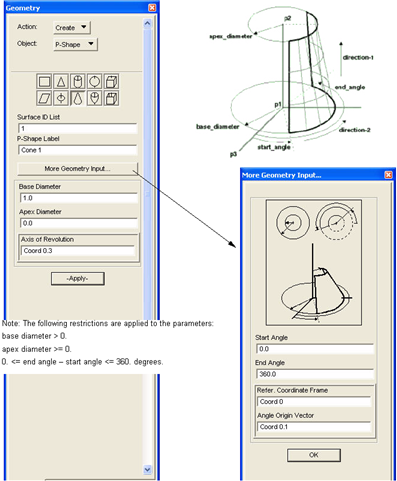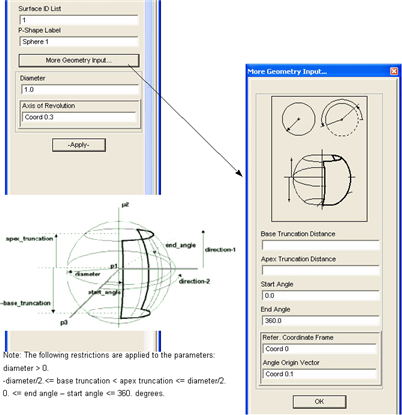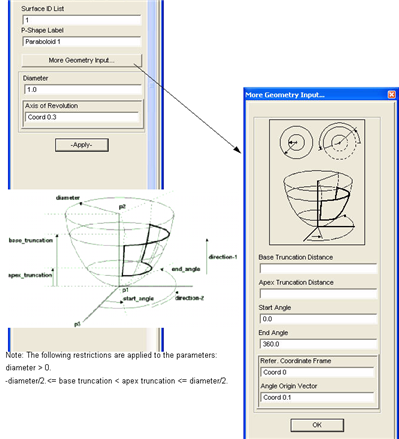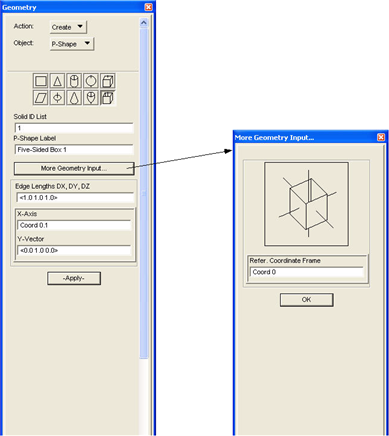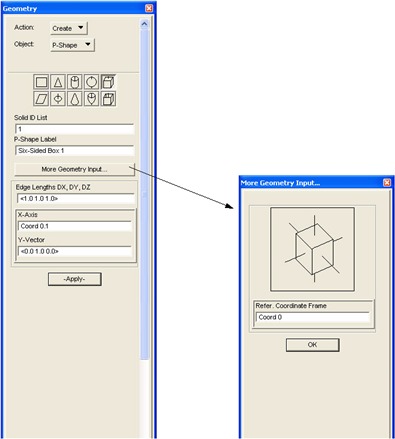XXXXXXXXXXXXXXXXXXXXXXXXXXXXXXXXXXXXXXXXXXXXXXXXXXXXXXXXXXXXXXXXXXXXXXXXXXXXXXXXXXXXXXXXXXXXXXXXXXXXXXXXXXXXXXXXXXXXXXXXXXXXXXXXXXXXXXXXXXXXXXXXXXXXXXXX''"> Creating P-Shapes
Rectangle
The rectangle is defined by an origin point p1, a corner point p2 along direction-1 or the u-direction, and a corner point p3 along direction-2 or the v-direction. All points are given with respect to the Reference Coordinate Frame. The point p3 is constrained to be orthogonal to the vector p1-p2 and will be corrected as necessary.
Quadrilateral
A Quadrilateral is defined by an origin point p1, and corner points p2 in direction-1 (u-direction), and p3 in direction-2 (v-direction), and an opposite corner p4 in the Reference Coordinate Frame.
Triangle
A triangle is defined by an origin point p1, and corner points p2 in direction-1 (u-direction) and p3 in direction-2 (v-direction). In Patran, the triangle is created as a bi-parametric surface and has one degenerate side at the origin point p1.
Disc
A disc is defined by an external and internal diameter. It is defined in a Reference Coordinate Frame with an Axis of Revolution shown as the vector p1-p2. The Angle Origin Vector is shown as vector p1-p3 and the start and end angle are measured in degrees circumferentially from that vector.
Cylinder
A cylinder is defined by a diameter in a Reference Coordinate Frame with an Axis of Revolution shown as the vector p1-p2. This vector also gives the height of the cylinder. The Angle Origin Vector is shown as vector p1-p3 and the start and end angle are measured in degrees circumferentially from that vector.
Cone
A cone is defined by diameters at the base and apex in a Reference Coordinate Frame with an Axis of Revolution shown as the vector p1-p2. This vector also gives the height of the cone. The Angle Origin Vector is shown as vector p1-p3 and the start and end angle are measured in degrees circumferentially from that vector.
Sphere
A sphere is defined by a diameter in a Reference Coordinate Frame with an Axis of Revolution shown as the vector p1-p2. The Angle Origin Vector is shown as vector p1-p3 and the start and end angle are measured in degrees circumferentially from that vector.
The sphere may be truncated at the poles. The base truncation gives the height of the sphere from the equator to the “bottom” of the sphere. If the negative truncation distance is equal to the radius, then the sphere is not truncated. The same applies to the apex truncation. Note that a negative truncation distance measures “below” the equator while a positive truncation measures “above” the equator.
Paraboloid
A paraboloid is defined by a diameter in a Reference Coordinate Frame with an Axis of Revolution shown as the vector p1-p2. This vector also gives the un-truncated height of the paraboloid. The Angle Origin Vector is shown as vector p1-p3 and the start and end angle are measured in degrees circumferentially from that vector.
The paraboloid may be at the apex and also at the base. Both truncations are measured from the apex of the paraboloid.
Five-Sided Box
A Five-sided box is defined as a solid, but is an open-shell meaning that it is a connected set of five surfaces which is not closed. The five-sided box is defined with dimensions dx, dy, and dz in the x, y, and z directions at the global origin. The face that is "missing" from the 5-sided box is the z+ face. At the time of creation, a local coordinate frame is used to create the solid at a user-prescribed location. The local coordinate frame is represented by an axis which defines the local origin of the solid at the axis begin point and the x-direction of the solid. The y-direction is defined by a vector. The z-direction is defined ortho-normal to the x-y plane.
Six-Sided Box
A Six-sided Box is a parameterized solid defined with dimensions dx, dy, and dz in the x, y, and z directions at the global origin. At the time of creation, a local coordinate frame is used to create the solid at a user-prescribed location. The local coordinate frame is represented by an axis which defines the local origin of the solid at the axis begin point and the x-direction of the solid. The y-direction is defined by a vector. The z-direction is defined ortho-normal to the x-y plane.
